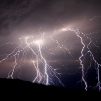-
Similar Content
-
- 81 replies
- 5,032 views
-
gaming If you had to take up playing games professionally, what genre would you specialise in? 1 2
By Reecejackox,
- 27 replies
- 910 views
-
- 21 replies
- 780 views
-
- 21 replies
- 1,826 views
-
- 5 replies
- 2,209 views
-
-
Recently Browsing 0 members
- No registered users viewing this page.







Recommended Posts
Create an account or sign in to comment
You need to be a member in order to leave a comment
Create an account
Sign up for a new account in our community. It's easy!
Join the herd!Sign in
Already have an account? Sign in here.
Sign In Now